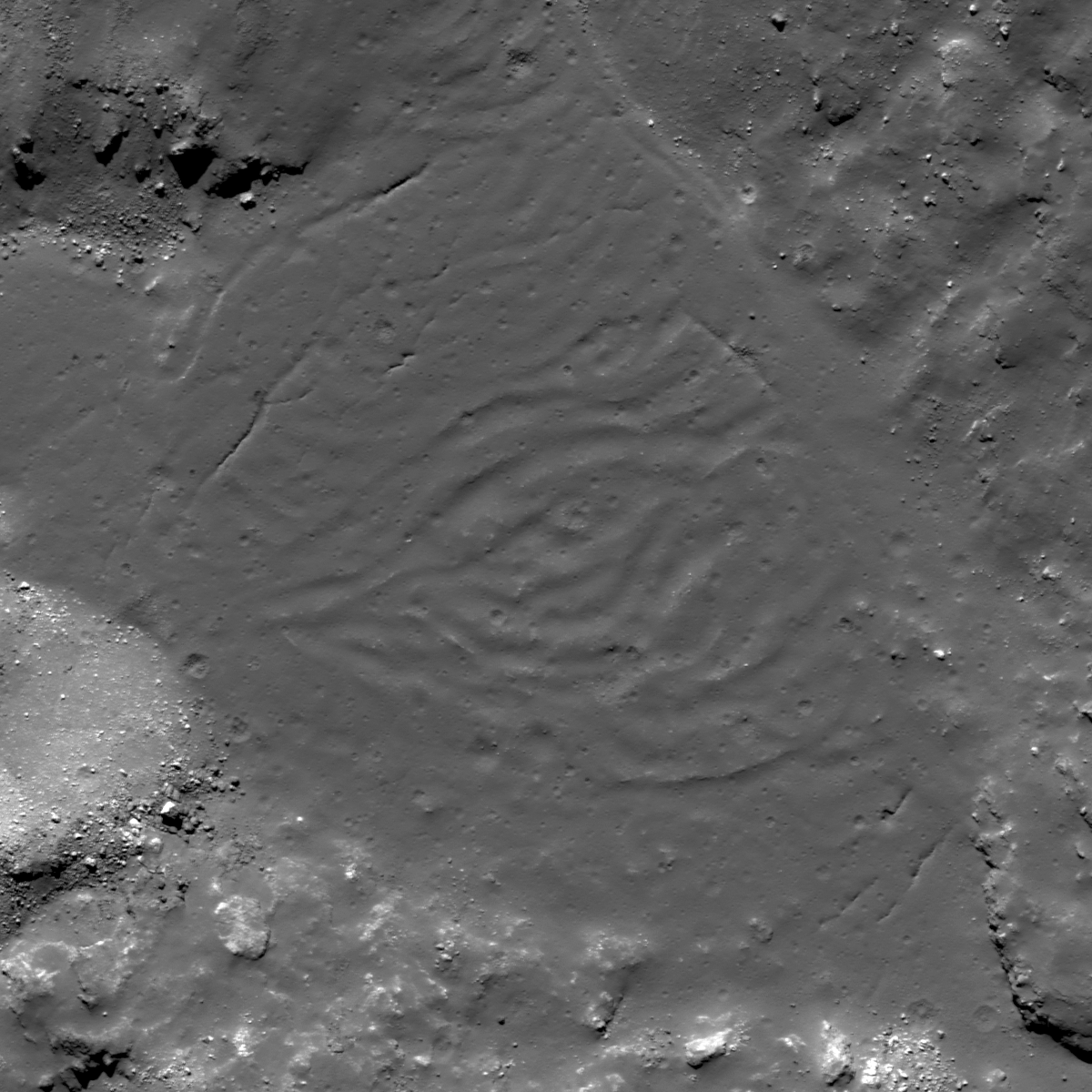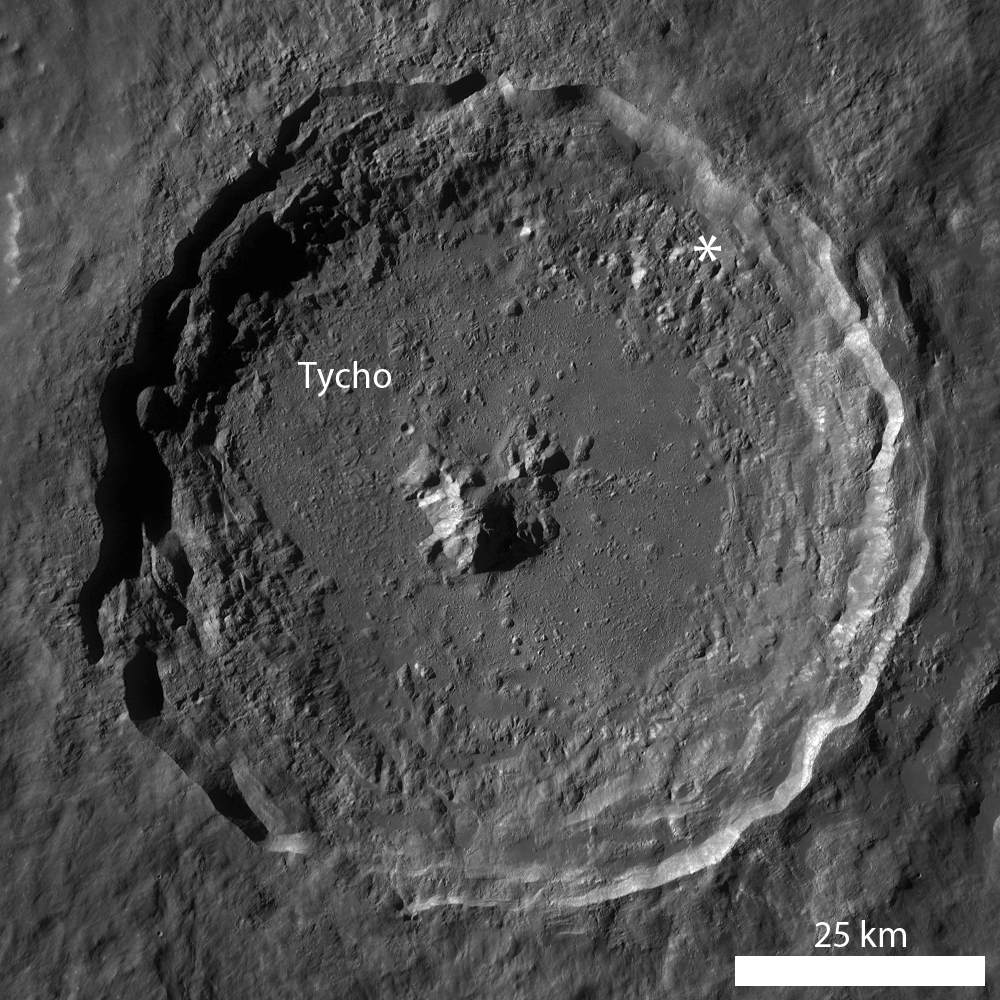
By now, it should be obvious that Tycho crater has many spectacular geologic features. Numerous Featured Images have explored the crater, its ejecta, and impact melt deposits. Today's Featured Image focuses on a melt pond located in the northeastern crater wall terraces (42.469°S, 349.672°E). The pond is relatively isolated, having formed in a depression where the melt pooled after streaming down the crater wall, and does not appear to connect to other, smaller melt ponds along the break in wall-slope. Above and below the pond is the thickly veneered crater wall, but the wall below the pool is rougher and the melt veneer is more fragmented and exhibits some mass-wasting erosion.
An in-depth look at the melt pond reveals linear cracks that have been partially filled in with thin regolith. These cracks may represent cooling cracks that formed as the pond cooled and decreased volume, where some melt at the pond edge remained "stuck" as the remainder of the pond cooled and contracted. Alternatively, the fractures may have formed in the thinnest portion of impact melt, possibly representing changes in the underlying topography, which is probably variable and uneven in the chaotic wall terrace material. However, take a look at the center of the pond - what do you see?
The center of the melt pond is deformed in a vaguely wrinkly, broad wave-like rippled region. The ripples are contained in the pond center in an approximate circular shape except for an elongation toward the left of the image. What could this morphologic feature possibly be? The ripple morphology is similar to the texture you might observe when removing the surface skin off a glass of hot milk with a spoon. The surface skin (or crust) on the milk deforms due to the force of the spoon as you gently attempt to collect the milk-skin before adding your hot cocoa mix and marshmallows. Consider a geologic example: as pahoehoe lava flows down the pali (steep slope) in Hawaii, the surface of the flow begins to cool and a crust forms. As the lava continues to flow downhill, the cooling lava slows down but the hotter lava uphill continues to flow fast, so the cooling lava begins to deform and wrinkle. Might this process be applied to the Moon? Sure! Tightly wrinkled, deformed impact melt is visible in the exterior flows at Tycho where there is a prominent change in surface slope. However, the melt pond in the Featured Image is not precisely like these exterior flows, but perhaps there is enough slope change beneath the pond to have affected the cooling melt and thus form these undulating ripples. Right now, we simply do not know, but a detailed scientific study focused on the occurrence, morphology, and topography of these types of features may provide a better understanding of the geologic story of these features.
How many melt ponds can you find in Tycho's terraced walls in the full LROC NAC image? Do any of these ponds have a ripply, somewhat wrinkled texture?
Related Posts:
River of Rock
Tycho Central Peak Spectacular!
View From the Other Side
Breached Levee
Published by Lillian Ostrach on 13 September 2012
